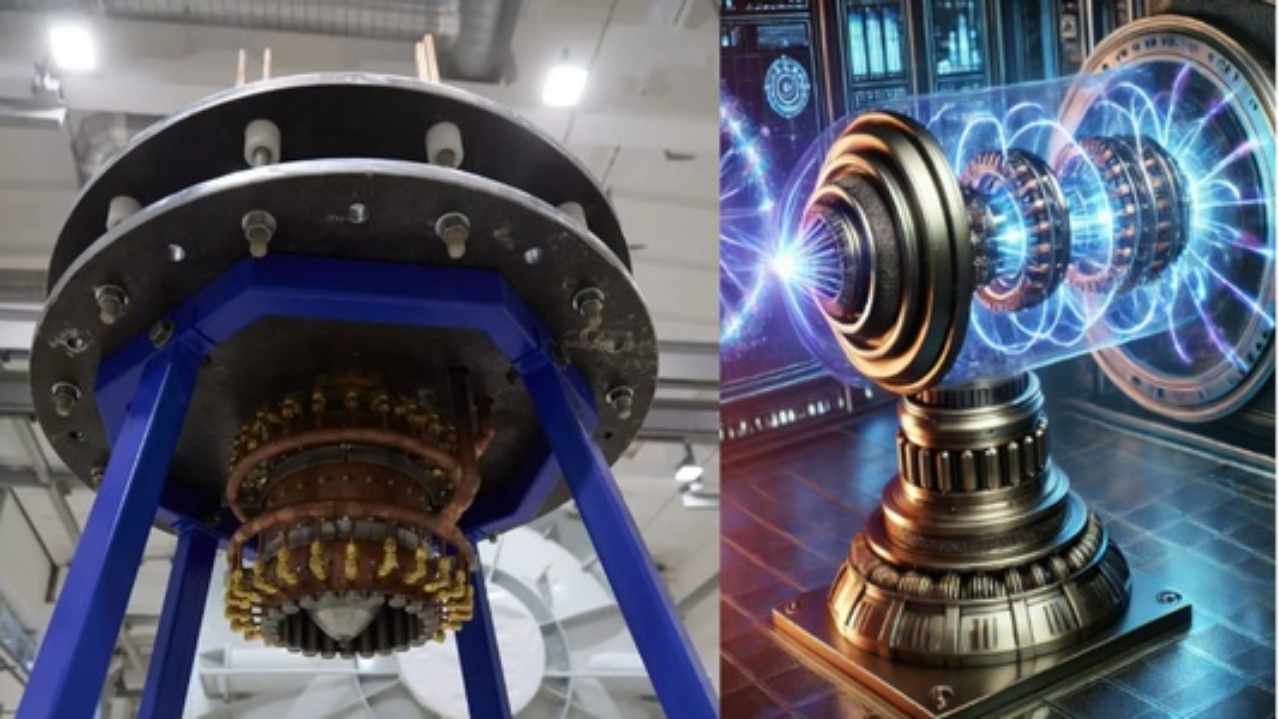The long-held aspiration for rapid interstellar travel is progressing significantly, thanks to recent announcements from Russia concerning a pioneering plasma engine. This advanced propulsion system, developed by scientists at Rosatom’s Troitsk Institute, has the potential to dramatically shorten the travel time to Mars from several months to as little as 30-60 days. This could mark the beginning of a new chapter in space exploration.
Understanding the Plasma Engine: A New Approach
Unlike traditional rockets that use burning fuel to create thrust, Russia’s plasma engine operates on a fundamentally different and more efficient principle. It employs electromagnetic fields to accelerate charged particles, primarily hydrogen ions, to incredibly high speeds.
Here’s a breakdown of how it functions:
Magnetic Plasma Accelerator: The central component of the engine is a magnetic plasma accelerator. Instead of expelling hot gases, it creates a plasma (a gas with electrically charged particles) and uses strong electromagnetic forces to propel these charged particles.
Hydrogen as Fuel: The engine uses light hydrogen as its fuel. Hydrogen’s low mass allows for highly efficient acceleration of particles to extreme velocities. Additionally, it generates less heat compared to other plasma propulsion methods, which helps in reducing wear on engine parts.
Continuous Thrust: Unlike chemical rockets that provide short bursts of power, this plasma engine is designed to deliver continuous acceleration. This steady propulsion enables the spacecraft to achieve remarkably high speeds over time, significantly reducing the overall travel duration.
High Exhaust Velocity: The engine aims to achieve exhaust velocities of up to 100 kilometers per second (approximately 360,000 km/h or 62 miles per second). This is a substantial improvement compared to conventional chemical rockets, which typically reach speeds of about 4-4.5 kilometers per second.
Recent Progress and Testing
Recent reports indicate considerable advancement in the development of this plasma engine. Rosatom has unveiled a laboratory prototype, which is currently undergoing extensive testing on the ground.
Prototype Details: The prototype reportedly produces a thrust of at least 6 Newtons and operates at an average power of 300 kilowatts in a pulsating, periodic mode.
Simulated Space Environment: To confirm its durability and performance, the prototype is being tested in a large experimental facility at the Troitsk Institute. This facility includes a vacuum chamber, 4 meters wide and 14 meters long, designed to mimic the harsh conditions of outer space.
Estimated Lifespan: Initial findings suggest the engine has a lifespan exceeding 2,400 hours, which is believed to be sufficient for a round trip to Mars.
Target for 2030: Developers are aiming to produce a flight-ready engine by around 2030. However, challenges remain in connecting the engine to a power source, which will likely require a nuclear power plant.
Impact on Space Exploration
The potential effects of this plasma engine are far-reaching and could revolutionize our approach to space exploration:
Significantly Shorter Travel Times: The primary benefit is the drastic reduction in travel time to Mars, from 6-9 months to as little as one to two months, or even 30 days during the most favorable alignments. This substantially shortens the mission duration, making crewed missions more practical and safer.
Reduced Radiation Exposure: Shorter travel times directly mean less exposure for astronauts to dangerous cosmic radiation, a major concern for long-duration missions into deep space.
Efficient Cargo Transport: While the engine is not intended to replace traditional rockets for initial launch from Earth, it is envisioned as a powerful “space tug” for moving cargo and spacecraft between planetary orbits. This would lead to more efficient and cost-effective deep-space logistics.
Opening Up the Solar System: The ability to achieve such high speeds could enable faster and more frequent missions not only to Mars but also to other distant parts of our Solar System, potentially even beyond.
Challenges and Future Prospects
Despite these promising breakthroughs, the technology is still in its early stages, and significant challenges persist. The requirement for a powerful energy source, likely a nuclear reactor, presents complex engineering and logistical difficulties. Furthermore, independent verification of the engine’s capabilities through scientific peer review is essential for widespread acceptance within the scientific community.
Nevertheless, Russia’s progress in plasma propulsion represents a substantial advancement in space technology. If successful, this innovative engine could fundamentally transform interplanetary travel, bringing humanity closer to establishing a continuous presence beyond Earth.
References:
Business Today. (2025, February 12). ‘Mars in just 30 days’: Russians have built something that could make Elon Musk’s SpaceX’s obsolete. https://www.businesstoday.in/visualstories/news/mars-in-just-30-days-russians-have-built-something-that-could-make-elon-musks-spacexs-obsolete-209210-12-02-2025
Business Standard. (2025, February 11). Earth to Mars in 30 days? Russia’s plasma engine breakthrough sparks buzz. https://www.business-standard.com/world-news/earth-to-mars-in-30-days-russia-s-plasma-engine-breakthrough-sparks-buzz-nc-125021100828_1.html
Indian Defence Review. (2025, April 4). Russian Scientists Unveil Plasma Engine That Could Reach Mars in 30 Days, Outpacing SpaceX’s Starship. https://indiandefencereview.com/russian-scientists-unveil-plasma-engine-that-could-reach-mars-in-30-days-outpacing-spacexs-starship/
Techno-Science. (2025, February 13). Russia develops engine to reach Mars in 30 days. https://www.techno-science.net/en/news/russia-develops-engine-to-reach-mars-in-30-days-N26504.html
R&D Magazine. (2025, February 11). Russia develops plasma rocket engine prototype for Mars missions. https://www.rdworldonline.com/russia-unveils-prototype-for-plasma-engine-that-could-reach-mars-in-1-2-months/
Republic TV. (2025, February 12). Earth To Mars In Just 30-60 Days: Russia Working On New Plasma Rocket Engine To Make This Possible. https://www.republicworld.com/science/earth-to-mars-in-30-60-days-russia-plasma-rocket-engine-may-make-this-possible
